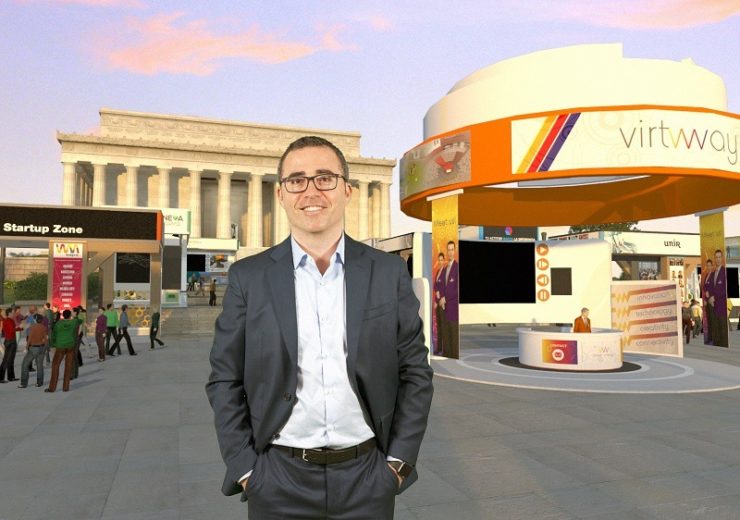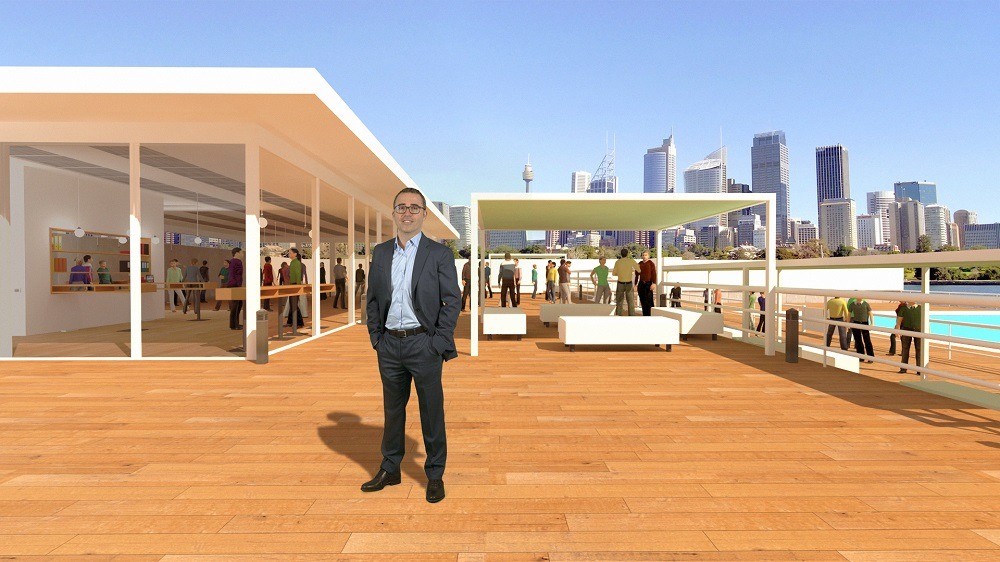Virtual 3D learning software could help equip workers for the future as emerging technologies redefine jobs

Virtway Events CEO Jose Antonio Tejedor inside one of the virtual 3D learning scenarios his company creates
Corporate education is in dire need of an innovation overhaul, believes Jose Antonio Tejedor, who says virtual 3D learning could be the answer. The CEO and founder of Spanish 3D virtual events company Virtway Events explains its benefits.
We are living in an era of unprecedented technological change. Gadgets once reserved to the realms of science fiction are now widely available to the consumer.
The world of business is undergoing a similar upheaval, as many look to explore the possibilities presented by technologies such as artificial intelligence, big data and predictive analytics.
New workplace technologies allow us to become more efficient and effective in our roles, but they will also redefine what we consider to be work.
Some jobs will disappear, but this will happen concurrently with the creation of many new roles.
The ultimate result of this will be a labour market in flux, as workers look to adapt their skill sets to the new needs of business.
As such, the value of corporate education has never been higher in ensuring that our workforces are adequately future-proofed.
With “traditional” forms of learning fast losing efficacy with contemporary workers, many companies are instead choosing to use virtual 3D learning software.
But how does this help to improve the impact of training sessions?
Virtual 3D learning offers experience of realistic scenarios
Corporate learning has traditionally been undertaken in one of two forms: a one-to-many lecture format, with a leader speaking and all else listening; or individually through a proprietary web portal of videos and text known as a learning management system.
Neither of these modalities immerses employees collectively in situations they are likely to experience, especially ones which can’t be easily replicated in a training session due to the risk involved.
For example, while it’s imperative that employees understand client objections and troubleshooting, it is only most effective when employers leverage the collective wisdom of their most valuable asset: their employees.

Training in a 3D virtual environment can help to improve outcomes.
Employees will be able to immerse themselves in situations that are normally difficult to experience, without compromising the business’s operations.
Being almost infinitely customisable, the platform can be adapted to reflect the work environment visually and replicate the interactions that a worker is likely to face.
Furthermore, these lessons will be optimised to immerse the employees and co-create the best information to carry forward.
Virtual 3D learning helps to include remote and flexible workers
Technology has made it simple for workers in geographically disparate locations to collaborate.
Many have taken this as opportunity to escape the physical confines of the office, with more than two-thirds of us now choosing to work remotely for at least one day a week.
While this will bring clear benefits for work-life balance and workplace efficiency, it creates new issues for training.
If the session is carried out in a central location, then those who work remotely will either need to be transported to the site at significant cost or miss the session.
This is a problem which is magnified with distributed and global teams.
If the training is carried out through a learning management system, then it becomes very easy for the worker to turn into a passive participant, or for the content to be misunderstood.
Even video seminars – which would represent an ideal compromise for some – have their own deficiencies.
Large-scale video seminars quickly become cluttered, with screens often becoming filled with dozens of video feeds at one.
This is in no way conducive to the collaborative work often needed in training and it frequently results in a clunky experience.

Using a 3D virtual world for your training means that remote workers can easily attend and become fully immersed in the session.
Furthermore, rather than facing an overpopulated screen, a user’s presence will be demarked by a chosen avatar, similar to how a training session is carried out in real life.
Not only does this provide an appropriate sense of space, but also allows users to easily collaborate.
Improving the collaborative experience using virtual 3D learning
In traditional forms of remote training, effective collaboration can be difficult.
Being unable to interact spatially with one another underlines the differences in location of its participants, something which has the potential to undermine collaborative efforts.
When making use of a 3D virtual world – being the closest online experience to reality – it’s possible to recreate the spatial cues that help to facilitate teamwork.
For example, in real life, should a worker wish to work with a smaller team, then they would simply move away from the main group to work in private.
In a video seminar, this would involve going through the arduous process of indicating to your collaborators that you wish to break off, leaving the pre-existing video chat, starting a new one, working in isolation, before joining back to feed into the larger group.
However, in a digital context, the action is as simple as grabbing your colleagues, and going off to work in a private space.
This experience can be improved further with spatialising voice chat, so that only those who are close to you can hear your discussions.
Data analytics for virtual 3D learning feedback
Organisations are now aware of the value of data.
Used correctly, it allows for businesses to identify trends and insights, which can be used to make better decisions going forward.
For a classroom-based training session, data is normally collected using a physical feedback form.
The information returned from these sheets is often of poor quality. This is as staff commonly think of them as an afterthought, and as a result, datasets are often compromised by missing or inadequate data.
With use of a 3D virtual world, organisers and participants are given access to extremely detailed analytics.
They’re able to get participation data on each attendee throughout every second of the event.
This can then be leveraged to check the information retention of sessions, as well as being used to improve future training sessions, making them more effective.
Why corporate education needs innovation
The world of corporate training has been crying out for innovation.
Barring the implementation of technologies like webinars, the sector has broadly existed in its current form for some time now.
As a result of this inertia, we’ve approached a point wherein it is no longer fit for purpose.
By making use of virtual worlds, we will be able to see vast improvements in the ways that corporate training is delivered. By doing this, we will all see the social and economic benefits of a skilled workforce.


